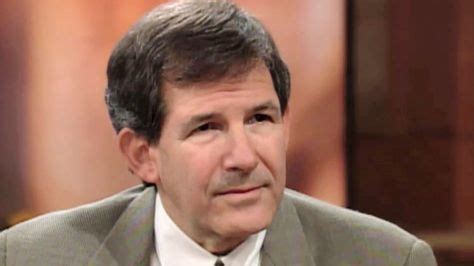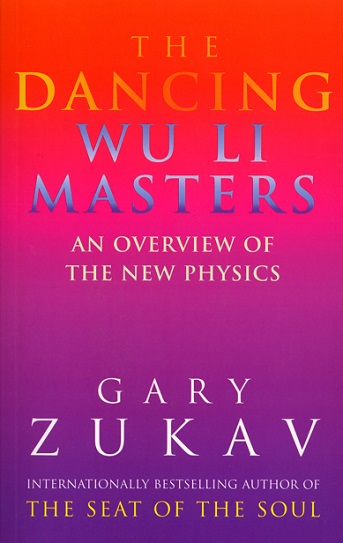|
home | what's new | other sites | contact | about |
|||
|
Word Gems exploring self-realization, sacred personhood, and full humanity
Quantum Mechanics
return to "Quantum Mechanics" main-page
website: https://seatofthesoul.com
Editor’s note: “Wu Li” is the Chinese word for physics; literally, “patterns of organic energy”
Excerpts from Gary Zukav's book: Since the tendencies of subatomic phenomena to become manifest under certain conditions are probabilities, this brings us to the matter (no pun) of statistics. Because there are millions of millions of subatomic particles in the smallest space that we can see, it is convenient to deal with them statistically. Statistical descriptions are pictures of crowd behavior. Statistics cannot tell us how one individual in a crowd will behave, but they can give us a fairly accurate description, based on repeated observations, of how a group as a whole behaves. For example, a statistical study of population growth may tell us how many children were born in each of several years and how many are predicted to be born in years to come. However, the statistics cannot tell us which families will have the new children and which ones will not. If we want to know the behavior of traffic at an intersection, we can install devices that gather data. The statistics that these devices provide may tell us how many cars, for instance, turn left during certain hours, but not which cars. Statistics is used in Newtonian physics. It is used, for example, to explain the relationship between gas volume and pressure. This relation is named Boyle's Law after its discoverer, Robert Boyle, who lived in Newton's time. It could as easily be known as the Bicycle Pump Law as we shall see Boyle's Law says that if the volume of a container holding a given amount of gas at a constant temperature is reduced by one half the pressure exerted by the gas in the container doubles… If the volume is reduced to one half, the pressure doubles; if the volume is reduced to one third, the pressure triples, etc. To explain why this is so, we come to classical statistics. The air (a gas) in our pump is composed of millions of molecules (molecules are made of atoms). These molecules are in constant motion and, at any given time, millions of them are banging into the pump walls. Although we do not detect each single collision, the macroscopic effect of these millions of impacts on a square inch of the pump wall produces the phenomenon of pressure on it. If we reduce the volume of the pump cylinder by one half we crowd the gas molecules into a space twice as small as the original one thereby causing twice as many impacts on the same square inch of pump wall. The macroscopic effect of this is a doubling of the pressure. By crowding the molecules into one third of the original space, we cause three times as many molecules to bang into the same square inch of pump wall, and the pressure on it triples. This is the kinetic theory of gases. In other words, pressure results from the group behavior of a large number of molecules in motion. It is a collection of individual events. Each individual event can be analyzed because, according to Newtonian physics, each individual event is theoretically subject to deterministic laws. In principle, we can calculate the path of each molecule in the pump chamber. This is how statistics is used in the old physics. Quantum mechanics also uses statistics, but there is a very big difference between quantum mechanics and Newtonian physics. In quantum mechanics, there is no way to predict individual events. This is the startling lesson that experiments in the subatomic realm have taught us. Therefore, quantum mechanics concerns itself only with group behavior. It intentionally leaves vague the relation between group behavior and individual events because individual subatomic events cannot be determined accurately (the uncertainty principle) and, as we shall see in high-energy particles, they constantly are changing. Quantum physics abandons the laws which govern individual events and states directly the statistical laws which govern collections of events. Quantum mechanics can tell us how a group of particles will behave, but the only thing that it can say about an individual particle is how it probably will behave. Probability is one of the major characteristics of quantum mechanics. This makes quantum mechanics an ideal tool for dealing with subatomic phenomena. For example, take the phenomenon of common radioactive decay (luminous watch dials). Radioactive decay is a phenomenon of predictable overall behavior consisting of unpredictable individual events. Suppose that we put one gram of radium in a time vault and leave it there for sixteen hundred years. When we return, do we find one gram of radium? No. We find only half a gram. This is because radium atoms naturally disintegrate at a rate, such that, every sixteen hundred years half of them are gone. Therefore, physicists say that radium has a “half life” of sixteen hundred years. If we put the radium back in the vault for another sixteen hundred years, only one fourth of the original gram would remain when we opened the vault again. Every sixteen hundred years one half of all the radium atoms in the world disappear. How do we know which radium atoms are going to disintegrate and which radium atoms are not going to disintegrate'? We don’t? We can predict how many atoms in a piece of radium are going to disintegrate in the next hour, but we have no way of determining which [particular] ones are going to disintegrate. There is no physical law that we know of which governs this selection. Which atoms decay is purely a matter of chance. Nonetheless, radium continues to decay, on schedule, as it were, with a precise and unvarying half life of sixteen hundred years. Quantum theory dispenses with the laws governing the disintegration of individual radium atoms and proceeds directly to the statistical laws governing the disintegration of radium atoms as a group. This is how statistics is used in the new physics. Another good example of predictable overall (statistical) behavior consisting of unpredictable individual events is the constant variation of intensity among spectral lines. Remember that, according to Bohr’s theory, the electrons of an atom are located only in shells which are specific distances from the nucleus. Normally, the single electron of a hydrogen atom remains in the shell closest to the nucleus (the ground state). If we excite it (add energy to it), we cause it to jump to a shell farther out. The more energy we give it, the farther out it jumps. If we stop exciting it, the electron jumps inward to a shell closer to the nucleus, eventually returning all the way to the innermost shell. With each jump from an outer shell to an inner shell, the electron emits an energy amount equal to the energy amount that it absorbed when we caused it to jump outward. These emitted energy packets (photons) constitute the light which, when dispersed through a prism, forms the spectrum of one hundred or so colored lines that is peculiar to hydrogen. Each colored line in the hydrogen spectrum is made from the light emitted from hydrogen electrons as they jump from a particular outer shell to a particular inner shell. What we did not mention earlier is that some of the lines in the hydrogen spectrum are more pronounced than others. The lines that are more pronounced are always more pronounced and the lines that are faint are always faint. The intensity of the lines in the hydrogen spectrum varies because hydrogen electrons returning to the ground state do not always take the same route. Shell five, for example may be a more popular stopover than shell three. In that case, the spectrum produced by millions of excited hydrogen atoms will show a more pronounced spectral line corresponding to electron jumps from shell five to shell one and a less pronounced spectral line corresponding to electron jumps from, say, shell three to shell one. That is because, in this example, more electrons stop over at shell five before jumping to shell one than stop over at shell three before jumping to shell one. In other words, the probability is very high, in this example, that the electrons of excited hydrogen atoms will stop at shell five on their way back to shell one and the probability is lower that they will stop at shell three. Said another way, we know that a certain number of electrons probably will stop at shell five and that a certain lesser number of electrons probably will stop at shell three. Still we have no way of knowing which electrons will stop where. As before, we can describe precisely an overall behavior without being able to predict a single one of the individual events which comprise it.
|
|||
|
|

